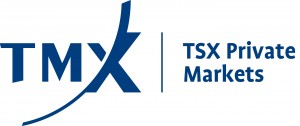Curated by Antonio Ariston Arias, CEO & Co-Founder Healthy Crowdfunder Corp
Wharton Study Finds Crowdfunders Act Similar to VCs

Join us tackle healthcare issues – one of top 8 priorities of AnIdeaNation
On the eve of September 23, 2013, a historic day for all of us waiting for this 80 year old Securities Act of 1930s, it is timely to reprint a study by Wharton professor Ethan Mollick who found that the sophisticated crowd can be as competent and even less biased than the traditional venture capitalists. For the uninformed, tomorrow is a milestone day when the US Securities Exchange Commission lifts the ban on general solicitation to accredited investors only. Welcome to the flat world of finance and marketing. As entrepreneurs, we envision better times ahead.
Highlights of his findings:
1. Entrepreneurs who demonstrate a history of successful projects or ventures are more likely to be crowdfunded.
2. Entrepreneurs who demonstrate third party endorsements are more likely to be crowdfunded – social proof.
Comments: We have to start with our innermost circle of friends and influence. If the people who know us intimately cannot even support us, we have lots of work to do, before even reaching out to total strangers.
3. It is partially true that entrepreneurs who demonstrate preparedness are more likely to be crowdfunded.
Comments: We emphasize the importance of premarketing, investor relations, and/or public relations work prior to the actual fund raising event. Winning customers or investors is a relationship building exercise. It starts long before we ask for other people’s money either to buy our products or invest in our ventures. It is about building trust and credibility that we will deliver as we say we will.
4. Selected projects are less geographically concentrated in crowdfunding than in venture capital. VC-funded project typically happens in start-up clusters at 70 miles average distance to VCs.
Comments: Hello Silicon Valley, you now have competition with beautiful Vancouver, the land of eternal optimists, health afficionados, yogis, runners, skiers and/or organic food consumers. Crowdfunding is immune to the cluster effect of San Francisco, Boston, or New York. With strong protective but less costly investor protection measures and feature friendly equity platforms for entrepreneurs, the world is indeed flat.
5. Gender is less predictive of selection in crowdfunding than in venture capital.
Comments: Not only is the world flatter, crowdfunding is indeed unisex. Certain studies have found women make for better CEOs or leaders. What about we immigrants who came to North America just like the early pioneers that left Europe? Crowdfunding breaks down all political, cultural, or ideological boundaries. At Healthy Crowdfunder, the market we serve will all benefit from the health ventures we support, regardless of creed, race, countries, age, and the list goes on as we destroy biases of dated monarchies. It is not surprising to see so much resistance to crowdfunding in certain circles. It is a battle for survival for ancient fiefdoms. The roadblock is not the SEC. It is the secret powers behind closed doors trying to assert their final control.
Click here to read Professor Mollick’s Wharton Study Finds Crowdfunders Act Similar to VCs.
Your comments are welcome. Feel free to connect with me Twitter @alamidas.
0.000000
0.000000
 At angel investor forums, it is quite common for entrepreneurs to make the mistake of over selling its projections with little discussion of its past and present financial status. Therefore, the story does not flow and only begs questions distracting us from the value proposition.
At angel investor forums, it is quite common for entrepreneurs to make the mistake of over selling its projections with little discussion of its past and present financial status. Therefore, the story does not flow and only begs questions distracting us from the value proposition.










